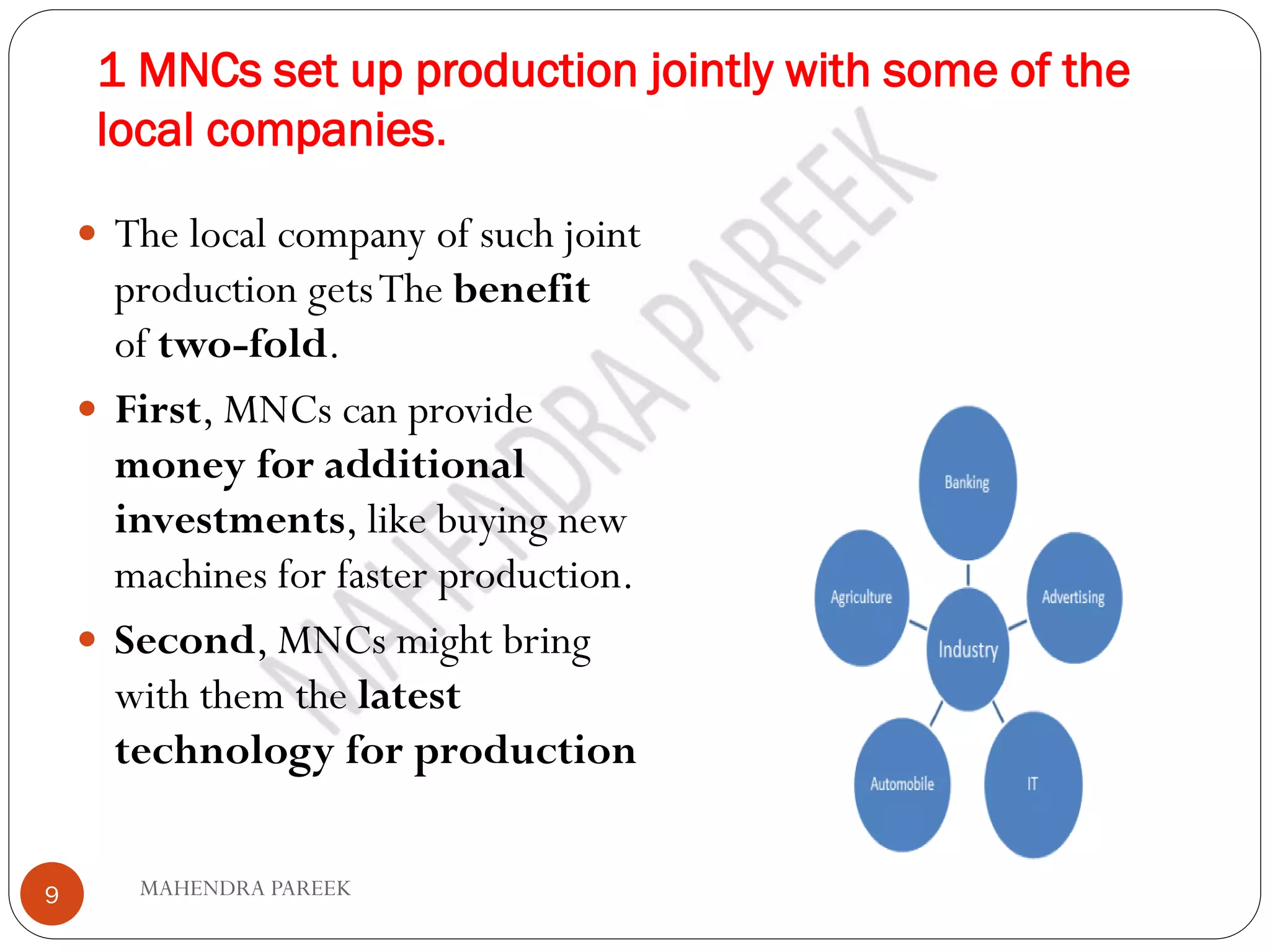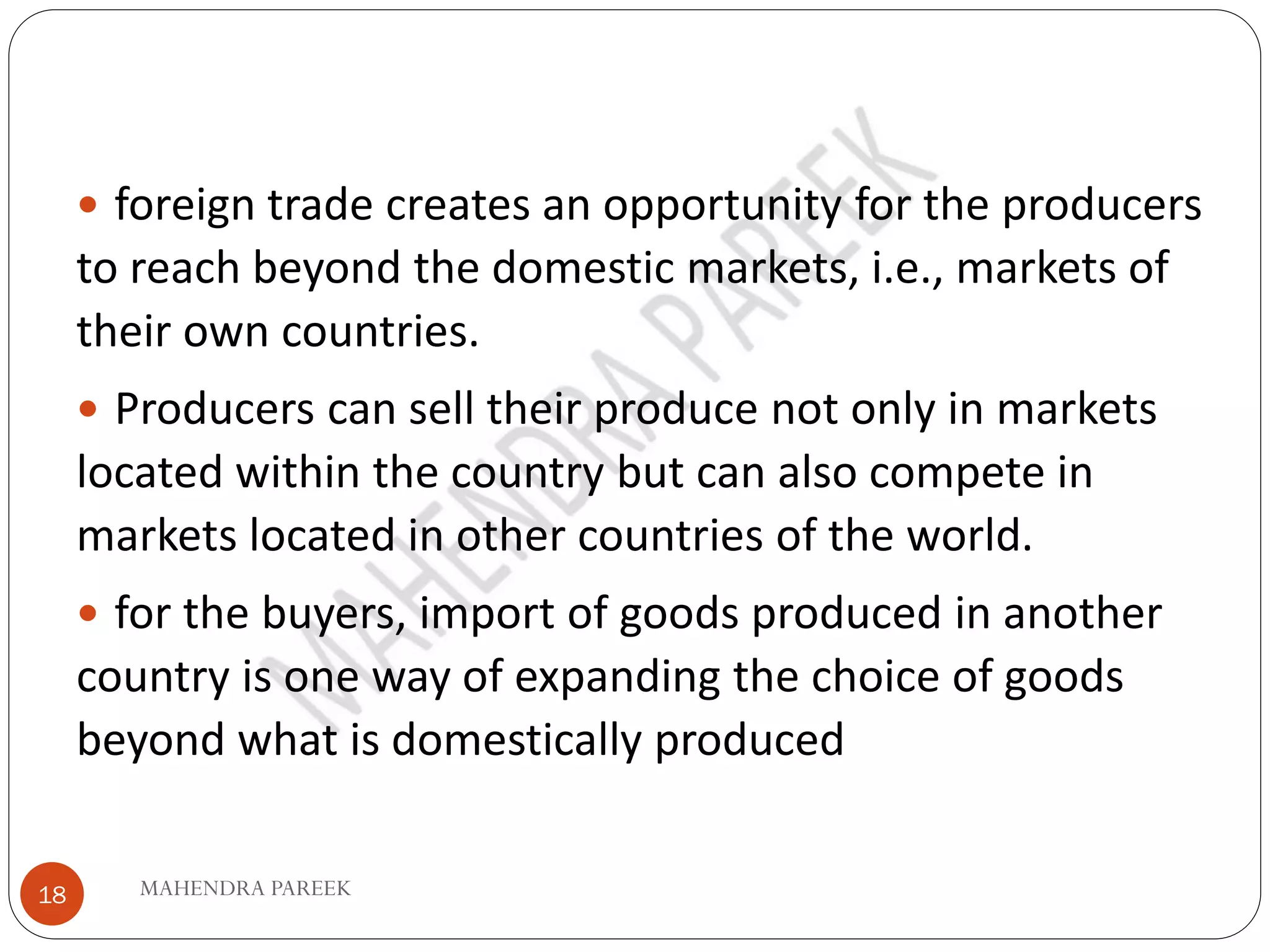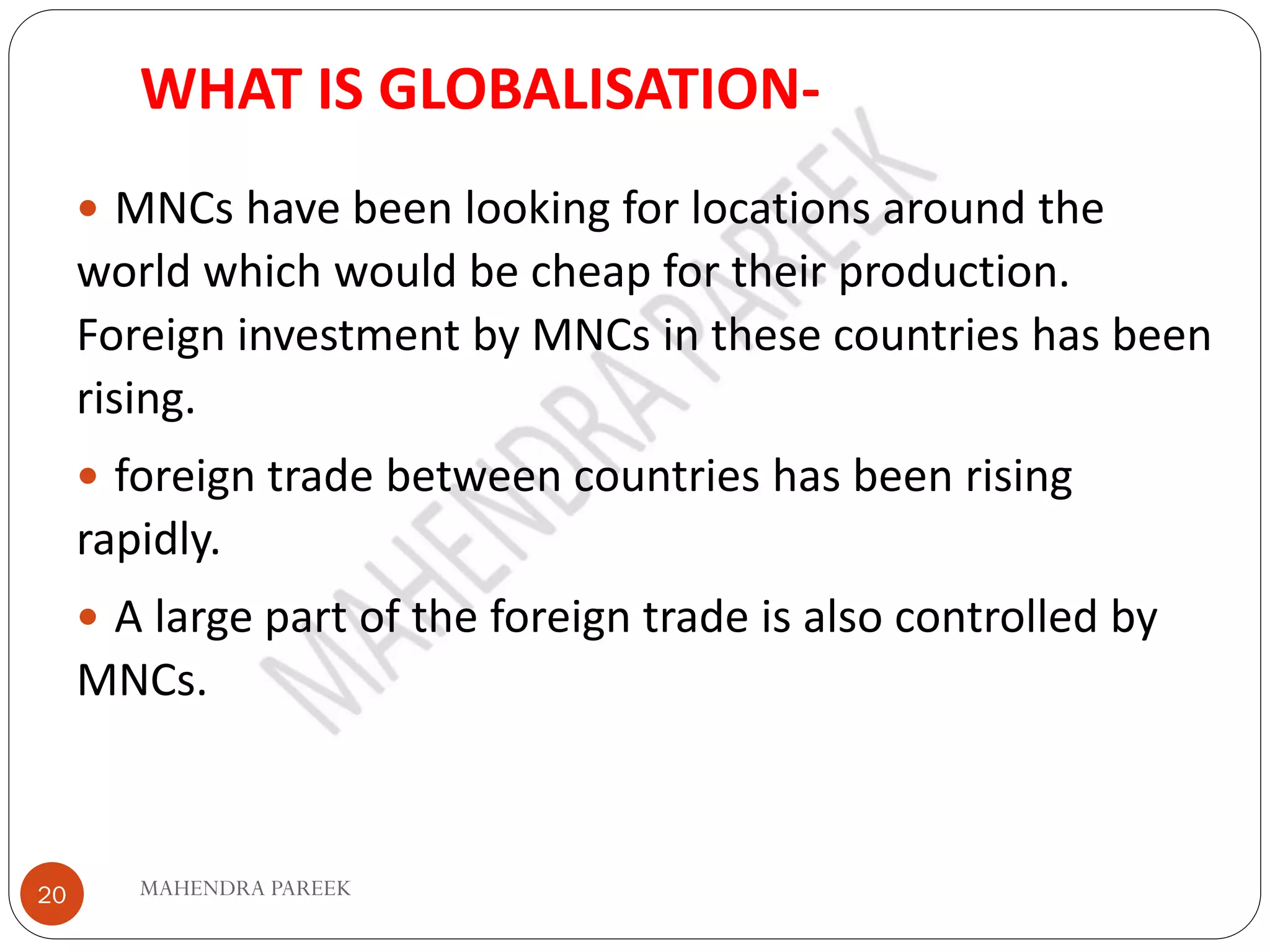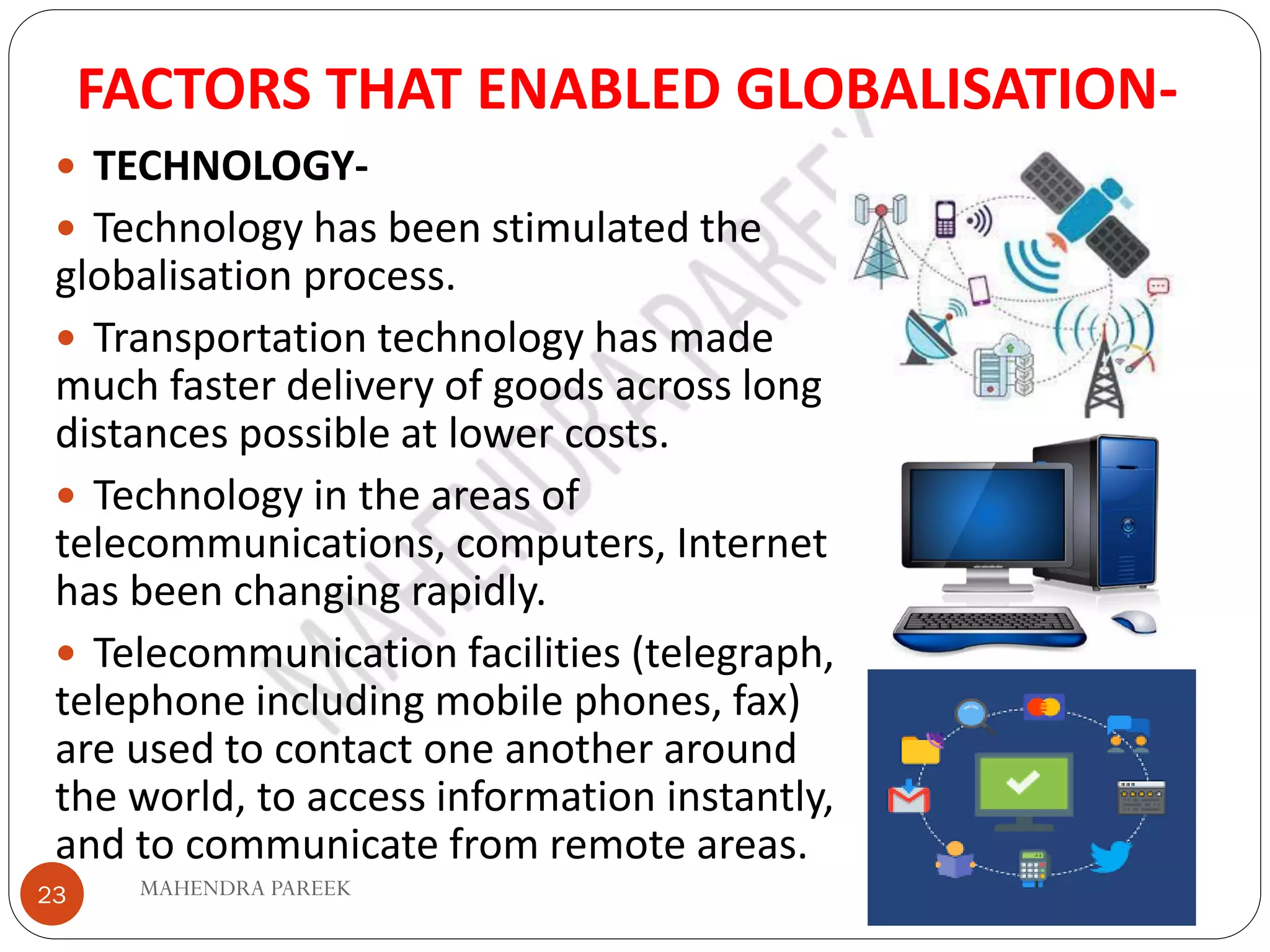The document discusses the impact of globalization on the Indian economy, highlighting the role of multinational corporations (MNCs) in transforming production processes and enhancing consumer choice. It outlines the historical context of trade, foreign investment, and the liberalization of the Indian economy, along with the challenges and disparities faced by different segments of society due to globalization. The text emphasizes the need for fair globalization to ensure that the benefits are equitably shared among all people, not just the wealthy and skilled.









































